We all know that Japan is known for its sushi, but what other foods can you expect to see and try when traveling to Japan? We wanted to let our viewers know about some of the foods we tried during our time in Japan and what we would recommend.
Entrées
Sushi: There are many different kinds of sushi that we tried during our time in Japan. These are the three that we felt like were the most commonly seen at restaurants.
-Nigirizushi: This was our favorite form of sushi. These pieces are formed by hand the rice being pressed into a rectangular shape with a bit of wasabi spread on top and covered by a topping; typically octopus (tako), freshwater eel (unagi), squid (ika), shrimp (ebi), or egg (tamago).
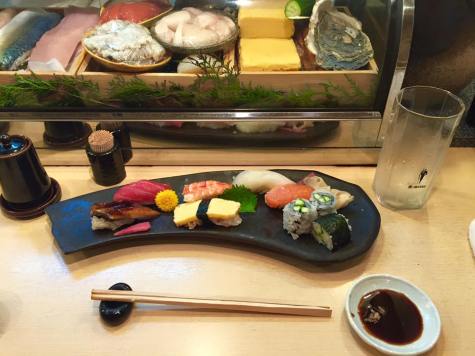
-Makizushi: This is the form of sushi that we typically see at local sushi restaurants in the United States. It is generally a layered roll of rice, vegetables, raw fish, or other ingredients that is wrapped in seaweed (nori) or rice paper.
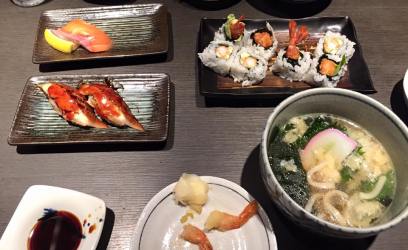
-Chirashizushi: This style is typically a chef’s special and is commonly formed in a bowl of sushi rice topped with a variety of raw fish and vegetables.
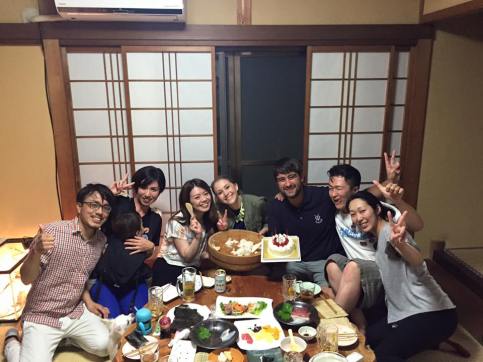
Noodles: This was always one of the top choices as it makes for a delicious, quick, and inexpensive meal.
-Ramen: A soup noodle dish that is made with thin wheat noodles typically served in a meat based broth, and generally uses toppings such as thin sliced pork, green onions, and dried seaweed.
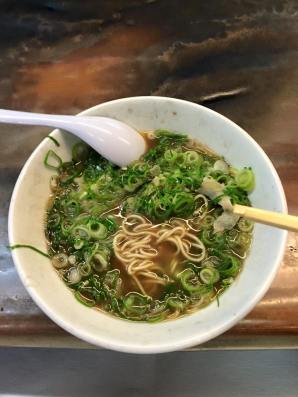
-Soba: A thin buckwheat noodle dish served with a chilled dipping sauce or hot broth.
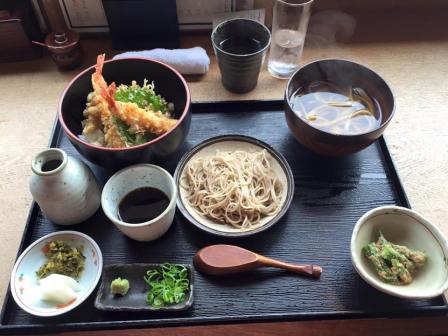
-Udon: A thick wheat flour noodle served as a hot dish in a mildly flavored broth. It typically comes with toppings such as green onion, tempura prawn and vegetables, and fried tofu.
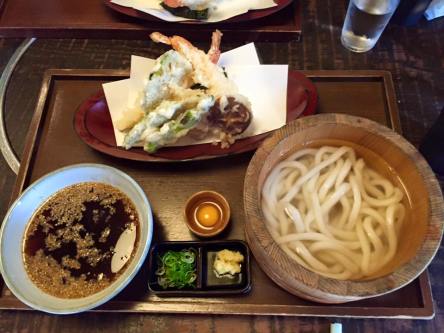
Tempura: A favorite and must try for all! This is dish of seafood and vegetables that is battered and fried.
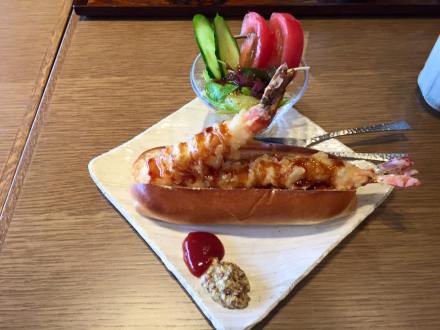
Shabu-Shabu: A dish that features thin slices of pork or beef boiled in water. This dish is different as you cook it yourself piece by piece gently moving it around in the hot broth.
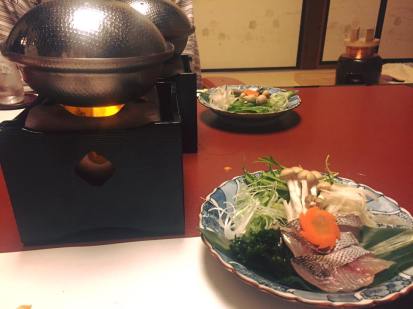
Hot Pot: A stew consisting of a pot of simmering broth in which you add the ingredients to the pot and they are cooked at the table. Hot pot dishes usually contain a variety of ingredients such as: thinly sliced meat, seafood, vegetables, mushrooms, and tofu.
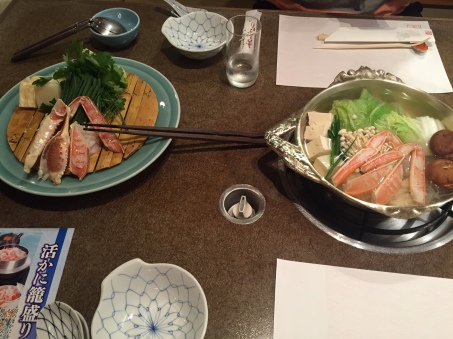
Yakiniku: grilled meat dishes often referred to as a Japanese version of a “barbecue” as you cook portions of meat over an open flame. Typically the meat choices are beef (wagyu, kobe, and matsusaka) served with soy sauce, wasabi, and salt for dipping.
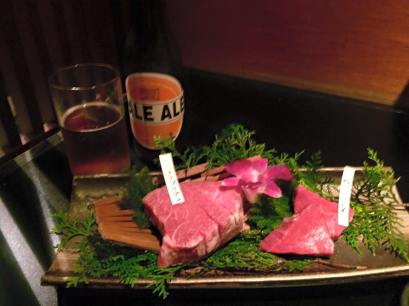
Okonomiyaki: better known as a Japanese pancake, this generously portioned dish became popular in the Hiroshima region. It is typically made with cabbage, egg, noodles, and a choice of meat (pork, octopus, squid). It is fried and topped with okonomiyaki sauce that is similar to Worcestershire sauce (but thicker and sweeter), Japanese mayonnaise, green onion, and bonito flakes.
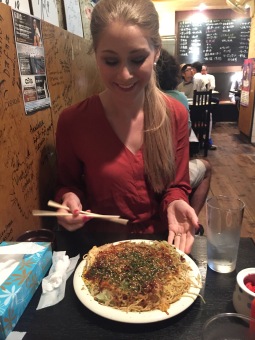
Yakitori: a piece of seasoned dark or white meat chicken grilled over a charcoal fire and skewered on a bamboo stick.
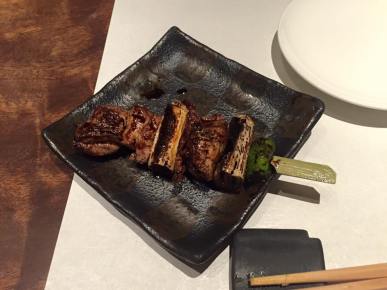
Gyoza: dumplings filled with meat and vegetables wrapped in a thin dough and often pan fried and served with a dipping sauce similar to soy sauce but sweeter.
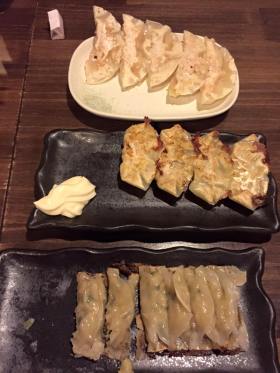
Kaiseki: This is a traditional multi-course Japanese dinner that often features small portioned artistically arranged dishes. We had this style of cuisine when we stayed in Kinosaki Onsen. Our arrangement went as follows:
-Sakizuke: an appetizer consisting of snail, Japanese sweet tomato, small shrimp, pickled seaweed, pickled ginger, white fish with rice (from left to right).
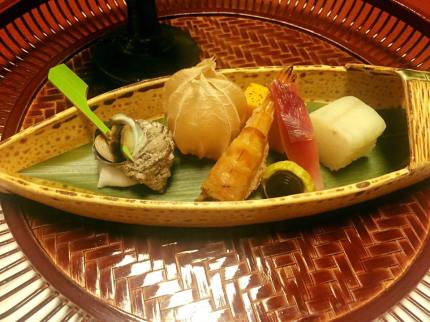
-Hassun/Mukōzuke: seasonal fresh sashimi featuring sea urchin, snail, squid, fatty tuna, and sea bream. Ours was also served with a light soup that contained mushroom and crab and to the far right you will see a small dish with baby sardines inside.
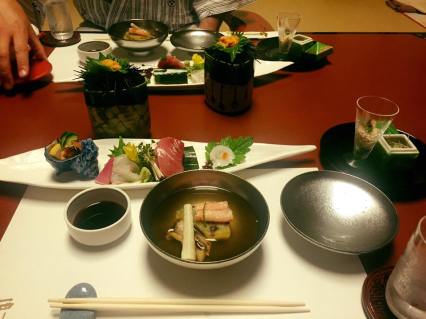
-Shiizakana: A sustainable hot pot dish featuring a variety of leafy vegetables, mushrooms, fish, and pork.
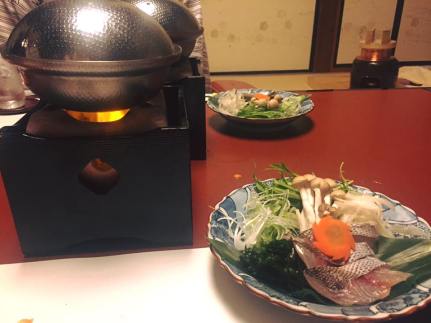
-Yakimono: a variety of meats, seafood, and tofu flame-grilled on pottery. Ours contained wagyu beef, scallops, prawn, red bean tofu, and potato. Served also with dipping seasonings and sauces.
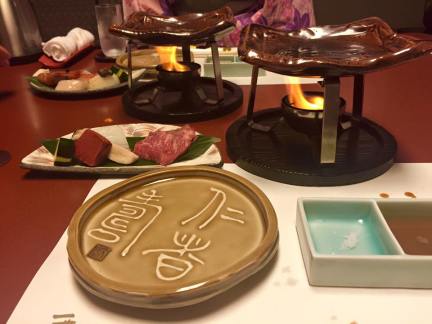
-Mizumono: a seasonal dessert ours being a fresh fruit gelatin served with green tea.
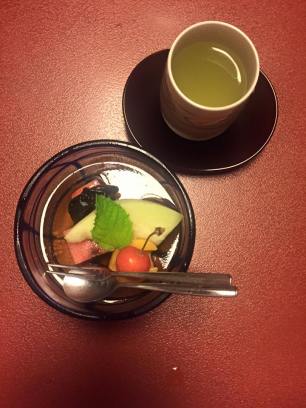
Snacks
Takoyaki: this popular dish is famous in Osaka. It is a ball-shaped wheat flour based snack that is typically fried and cooked inside a special Takoyaki pan. It is usually filled with dried Octopus, tempura, and green onion. It is topped with a sauce similar to Worcestershire (but thicker and sweeter) and Japanese mayonnaise. We would say that this was the only dish we didn’t care for in Japan, as the octopus had a strong flavor and the inside was rather gooey. However we only tried them from one stand so that could have been why we didn’t have a pleasant experience.
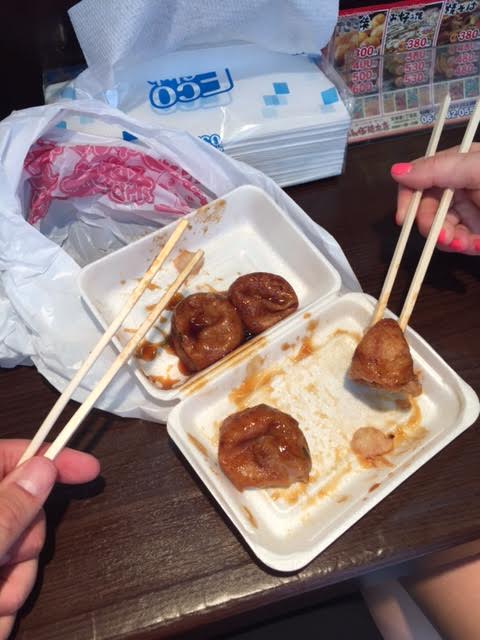
Fish Cake: We don’t know what these are technically called in Japanese but they taste similar to fish sticks made with a cod type fish and other ingredients fried in a light batter. Definitely not our favorite, but worth a try!
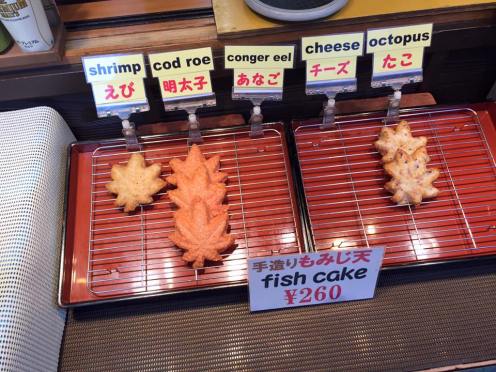
Cheese Bun: Again, we honestly don’t know the exact name of these awesome snack from 7/11 but it was basically a bread bun baked with cheddar cheese. Finding cheese or something with cheese is a rarity in Japan.
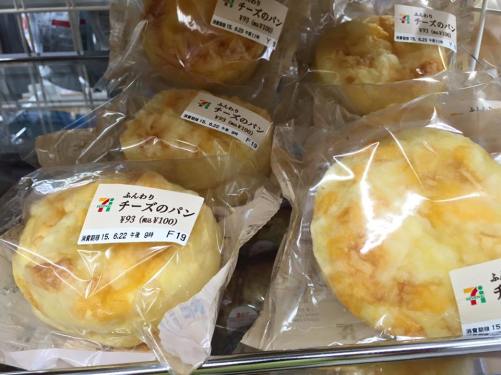
Tako Tamago: Octopus with a quail egg in the head. Yes, it is as weird as it sounds but if you get the chance to visit any local markets while in Japan you can make a meal out of all of the interesting street vendor food there is to offer.
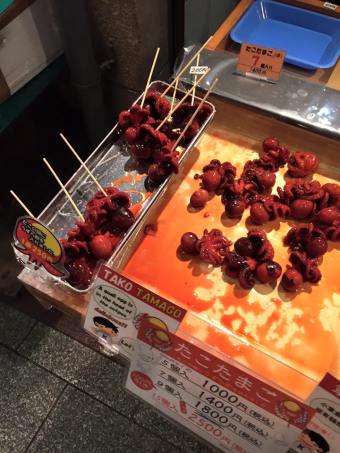
Sweets
Taiyaki: a fish shaped cake commonly filled with sweet red bean paste, custard, chocolate, or cheese. In Hiroshima, the Taiyaki we had was shaped like a maple leaf and was more of a dense cake with the fillings. In Tokyo, the Taiyaki was more of a crispy pancake filled with red bean paste.
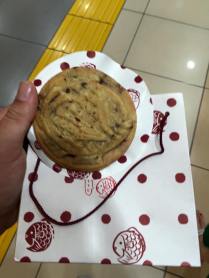
Wagashi: a Japanese confection made with azuki bean paste and fruit. It is commonly served with tea. This is truly a cultural experience and while we truly enjoyed it, we knew that wagashi might not be for everyone as it has a very mild flavor and a distinct texture.
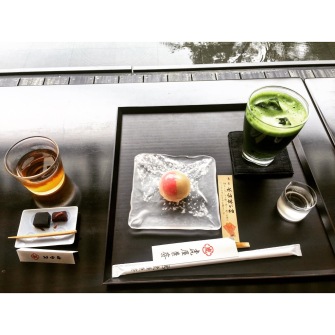
Dango: a Japanese dumpling (similar to mochi) made from sweet rice flour and commonly found on a skewer.
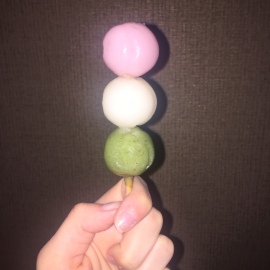
Mochi: a chewy rice cake made out of sweet rice flour often containing red bean paste, peanut paste, sesame paste, or fruit gelatin on the inside (see photo of shaved ice below as it contained mochi).
Ice Cream: Japan has a large variety of soft serve flavors. We could honestly write an entire blog post on ice cream alone! Our favorites were pineapple, strawberry ice, black sesame, vanilla & green tea, melon, and vanilla cookie.
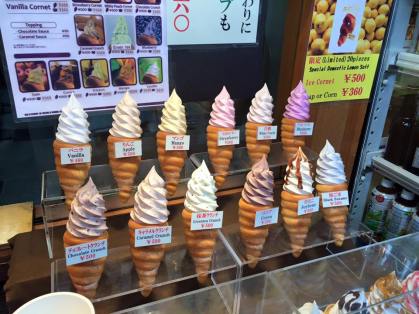
Kakigōri: Also known as “Japanese Shaved Ice,” kakigōri was a rather delicious and refreshing treat! Like the soft serve ice cream, kakigōri has many different flavors including strawberry, grape, melon, green tea, cherry, and lemon.
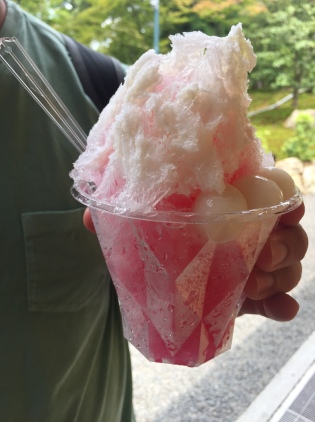
Crêpes: These are very thin pancakes made from wheat flour served with a large variety of fillings. In Japan, crêpe stands were nearly on every corner. Remember how we said we could write a whole blog post about ice cream in Japan? Well we could make a new blog solely dedicated to these scrumptious treats! Many of the flavors are sure to send you into sugar shock but they are quite worth it.
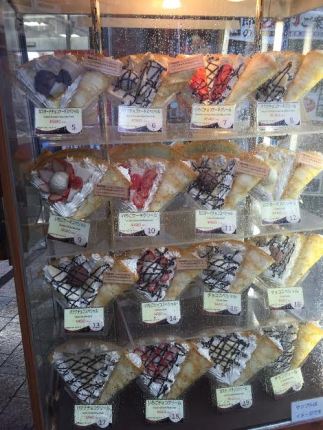
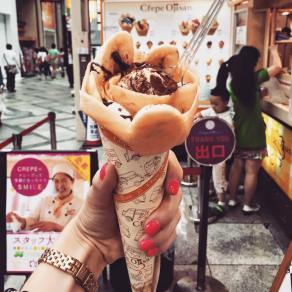
Parfaits: mainly made of ice cream and other sweet ingredients served in a tall glass. It is one of Japan’s most popular desserts and are often found in coffee shops or maid cafés.
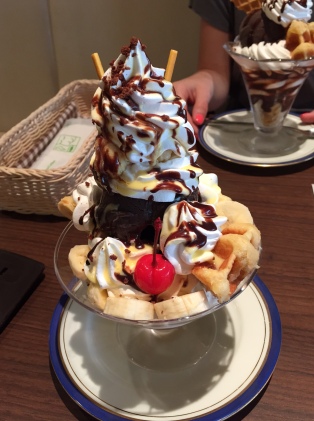
Donuts: Oh for the love of donuts! While donuts are typically known as being a delicious cake, in Japan they are even better and often very cute!
Melonpan: is best described as a sweet bun cooked with enriched dough and covered with a sugary crust. Don’t be deceived by the name there is nothing melon about it besides the appearance.
Cheesecake: First and foremost, Japanese cheesecake is nothing like Western-style cheesecake. The best way we can describe it is that is a marriage of angel food cake and cheesecake and because of that, it is unlike anything you’ll ever try and often is sold as a whole cake for roughly 800-1000¥.
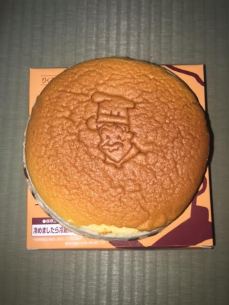
Drinks
Coffee: Much like in other countries we have visited or lived coffee is served hot or cold. We enjoyed sipping on espresso drinks from local coffee shops and selecting a Boss iced coffee from a nearby vending machine.
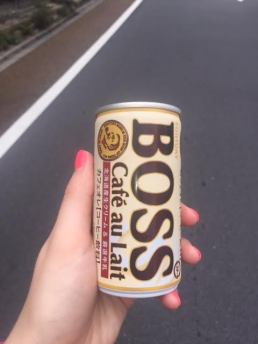
Tea: Being the most common drink in Japan there are many varieties to choose from. If you are interested in learning more about tea in Japan we found this article helpful. We personally enjoyed Matcha (powdered green tea), Kocha (black tea), and Hojicha (a sweet roasted green tea).

Sake: Before visiting Japan the only sake we had tried had been rather strong. While in Japan we tried many different kinds of sake and were pleased with each one that we tried. We learned that when buying a brand of sake it is best to find one that includes only ingredients in Japan as it is the purest form.
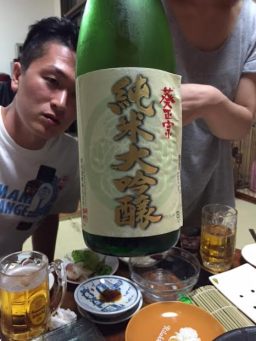
Beer: The four most popular beers include Kirin, Sapporo, Asahi, and Suntory. We tried each and found that they were all similar in taste. Asahi seemed to be the driest brew, followed by Kirin and Sapporo. Another interesting fact is that Japan has vending machines that you can purchase alcohol from as they have no open container laws.
Soft Drinks: Japan carries Coke and Pepsi products although they are limited to choices. For instance, we didn’t see Dr. Pepper while in Japan. It is also uncommon to have ice with your beverages, something that we commonly have in the U.S. but we did find that they sold a cup with ice at 7/11’s freezer section.
Ramune: Ramune is a carbonated soft drink found widely around Japan. It is known for its unique bottle design and large variety of flavors. While in Kinosaki Onsen we tried the Onsen specialty flavor only sold there. It was comparable to Sprite in the U.S. but a lighter flavor. Other popular flavors include: strawberry, lychee, melon, grape, muscat, pineapple, watermelon, and orange.
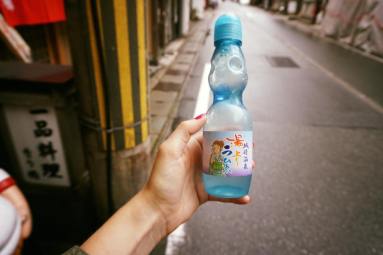
We hope we gave you some insight on that Japanese cuisine is truly like. We never tired of the food or trying new things! What are some of your favorite Japanese foods and beverages?
Logan & Kallsy
Pages of Travel
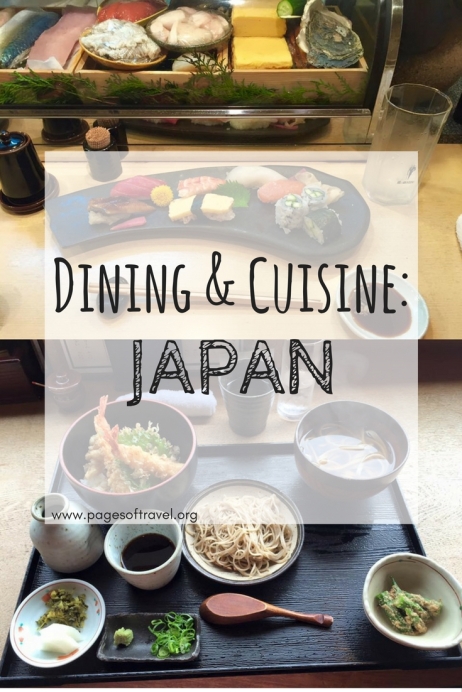








Nice round up of the food you’ll find in Japan. After reading your post, I’m so hungry. I want sushi now. I’ll take some of those adorable doughnuts too, and I’d love to try dango since it is an emoji. 😉
LikeLike
Thank you Erin! We loved the food in Japan. After walking nearly 25 miles a day you’d think we would have lost weight… Instead we broken even! I wonder why? HAHA! The doughnuts were seriously awesome, almost too cute to eat and you can get dango at any 7/11 there. 🙂
LikeLike
Haha. I’m not surprised! I mean, basically I’d want to live on sushi, noodles, and sweets in Japan … not exactly the healthiest of foods. But, tasty, for sure!
LikeLike
Just drink a gallon of green tea a day and it off sets it! 😉
Pretty sure I had a crepe or two everyday! HA!
LikeLike
Haha. Great tip about green tea!
LikeLike
Japanese Ramen is my favorite. The sushi plate looks so exquisite and so healthy. Thanks for the round-up for the delicious Japanese food.
LikeLike
We loved the Ramen too! Thanks for visiting, glad you enjoyed! 🙂
LikeLike